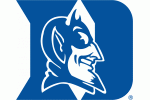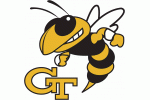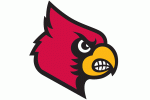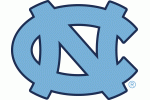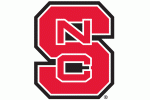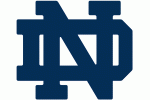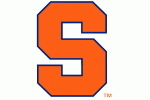CAN NORTH CAROLINA FIND A RELIABLE BIG MAN?
There are some things in life you’re just use to. For me, it’s rejections at bars (I blame the jorts). For North Carolina fans, it’s the expectations that the Tar Heels will simple reload inside year in and year out. I can’t blame them, just look at the names: Ed Davis, Tyler Hansbrough, Brendan Haywood, John Henson, Rasheed Wallace, Marvin Williams, Brandon Wright and Tyler Zeller.
Yet, despite loading up the past two years with highly touted 4-5 star big men, last year’s group were unable to just reload. While athletic, they looked confused, overmatched at times, with zero offensive abilities. For most of college basketball, that’s just how life is: big men take longer to develop. For the Tar Heels, this was a new experience.
By the end of the season, the struggles in the paint were obvious. It got so bad, Roy Williams just benched them all and “small ball” was born with undersized James Michael McAdoo playing center.
Now I’ve already made my argument that the success of ‘small ball’ was a myth. The fact is, when you look at the win-loss record with who they played, plus the actual stats, nothing really improved. If you were brave enough to look at that link above, the one stat that would have stuck out was rebounding. Carolina went from averaging 41 rebounds per game to around 30. That’s a massive drop and that’s what happens when the tallest player on the floor is just 6-9. If anyone has learned anything from watching the Tar Heels play under Roy Williams, everything starts with the rebound.
This is why I completely expect Williams to ditch the small ball for the traditional lineup next season, which brings us back to the original question? Who will play center?
Now before I jump into this, I’m writing this assuming the roster will not change, which means I will not figure in Andrew Wiggins. If he signs with UNC, then we’ll talk again.
Roster spots 1-4 are pretty set in stone. Marcus Paige will run the point, while Nate Britt backs him up. The Tar Heels are a little thin on the wings. Leslie McDonald should get the start at the two spot, while P.J. Hairston handles the small forward role. J.P. Tokoto will be their primary backup (with Britt getting some minutes off the ball). At power forward, James McAdoo will hold down the four.
This leaves six guys to fill in the center spot, as well as backing up McAdoo. This list includes sophomores Joel James and Brice Johnson, juniors Desmond Hubert and Jackson Simmons, then two freshmen, Kennedy Meeks and Isaiah Hicks.
For now, I’m going to leave off Jackson Simmons. At 6-7, he’s a little short to play the five-spot. While he does have some talent (just six turnovers in 234 minutes of play last year), at best his role will be limited (5-7 minutes per game). I’m actually shocked he didn’t transfer out this year with just two years of eligibility left.
Of of the rest of them, which of these big daddies wants to be the inside presence Roy Williams desperately wants? Last year, Joel James, Brice Johnson and Desmond Hubert all got the call to be the starter, but none could hold on to the job. By season’s end, each saw their minutes cut in half.
JOEL JAMES
James is the biggest of the bigs. At 6-10, 260 (he weighed over 300 pounds in high school), he’s the one guy who can get into the paint and push people off the block. Despite his size though, he still runs the floor well. Coming out of high school, he was known as a screen and roll guy, although I haven’t seen too much of that in college.
He does have soft hands for a big fella, but last year he showed little basketball IQ in the paint, with zero back to the basket go-to moves. The few points he got (he averaged 2.3 points per game in about nine minutes of action), came from offensive rebounding. Speaking of rebounds, he managed 2.3 per game, but a lot of those came early while feasting on cupcakes. He pulled down just 19 boards after January 7.
BRICE JOHNSON
An athletic face-up four, Johnson has the potential to be a force on both ends. He loves to run the floor and is an aggressive rebounder and shot blocker, despite a less than impressive wingspan (damn these stubby arms!). In fact, he probably relies too much on the shot block, as opposing guards easily pull him away from his guy for an easy dish and lay up.
While Johnson is suppose to have 17-foot range on his jumper, he lived for easy buckets. It worked at first, as of December 9 of last year, he was averaging over nine points per game on 64.5 percentage shooting. However, once ACC played kicked in, his shooting percentage fell to 50-percent and his scoring and rebounding total was nearly cut in half.
Like Joel James, Johnson has zero inside moves, but unlike James, he didn’t have the size to do much else inside. The fact is, if he didn’t get that easy backet right off the bat, he tended to get stuck. He struggled mightily to kick the ball back out. He averaged just one assist for every 17.6 shots taken.
DESMOND HUBERT
A 6-9, 220, Hubert is a big boy. His specialty is defense. He’s a shot blocker, but his lateral quickness is underrated and he runs the floor well. These are all traits that Roy Williams loves. The problem is, if you can’t score at all, then you’re just a hole in Carolina’s high powered offense.
In fact, it’s been two years and Hubert has still not shown that he even grasps the concept of offense. He averaged just one point per game last year, playing about nine minutes per. This lack of production eventually cost him. While his minutes more than doubled from his freshman campaign (from 123 to 338), when the game mattered, Hubert was disappeared like a bastard child on Game of Thrones. Against the big boys, Duke (twice), Virginia, Miami (in the ACC Title Game) and Kansas (in the NCAA Tournament), Hubert played a total of nine minutes, half of which was garbage time.
KENNEDY MEEKS
When it comes to this incoming freshman, the name that keeps getting thrown around is Sean May. Like May, Meeks is meaty. Like Mays, Meeks doesn’t have the vertical leep that you expect from centers these days. Like Mays, he’s an excellent passer with soft hands. Like Mays, he’s quick with the release outlet pass (an underrated skill, especially in Roy Williams’ offense).
However, for Meeks to become Mays, he still has a lot of growing to do (and not around the belly). On the offensive end, he can certainly lean on defenders, setting himself up for a nice turnaround shot. He can also hit a jumper from 15-feet, which is a nice skill to have. Howvever, he’s a weak rebounder (it goes back to his lack of hop). What made Mays so great was his basketball IQ, the man just knew where to be on the court. Mays never out-jumped anyone, but he out-positioned them and with his hands, any rebound that sniff his fingers got stuck there.
ISAIAH HICKS
Imagine Brice Johnson with 20 pounds of weight. That’s what you get with Hicks. He’s a dynamic face up four, whose high school championship stat line was: 34 points, 30 rebounds and seven blocks. He’s got great foot work for a freshman and is not afraid to attack the basket in one-on-one situations. Like Brice Johnson, he’s a runner and always look for the shot block. Unlike Johnson, he doesn’t have a lot of range, preferring to do most of his damage at the rim.
So what’s the answer to the question? Who will step up to be the man?
The answer is, whoever can become a scoring threat. The fact is, North Carolina doesn’t need another season playing four on five on offense. This is an offensive system that requires a big man. It flows best when you have a guy who can beat their defender down the floor on the fast break, but in the half court offense, be able to put his back to the basket, take his defender one on one and put the ball between the twine.
If I had to put my money on someone, I’d put it on Brice Johnson. The reality is, to start the season, the battle for the five-spot comes down to he and Joel James. The problem with James is, I think his ceiling is lower than Brice’s ceiling.
For Johnson, it’s all about weight, weight and some more weight. His lack of muscle killed his confidence inside. He just couldn’t handle the workload. A full offseason of weight training should add at least 20 pounds of manliness. With that, I expect to see a more confident Johnson.
If things work out that way, Jones will be the primary backup, while Hubert and Hicks battle for the minutes at power forward behind McAdoo. This would leave both Jackson Simmons and freshman Kennedy Meeks stuck with very limited roles.





